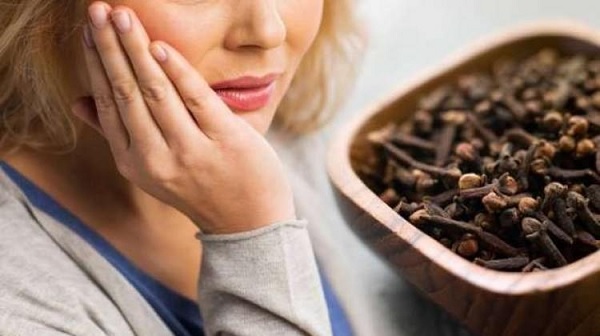What causes a tongue wound?
Lesions in the tongue are usually benign and can heal quickly. It is possible to use natural methods and mouthwashes in the treatment of simple wounds. However, tongue sores that do not go away on their own within 14 days should be evaluated by an otolaryngologist or dentist. Stubborn lesions of the tongue are evaluated within a broad framework ranging from tongue cancer.
How is the tongue wound seen?
Sores on the tongue can be seen in different ways like other mouth or skin sores. The most common types of wounds in the tongue:
Aphthous Ulcer: It is a sore painful white wound with a red periphery.
Leukoplakia: White, off-white background, lesions that are slightly higher than smooth or rough.
Erythroplakia: It is the red color of the lesion described in leukoplakia.
Lichen Planus: Puffy purplish lesions on the tongue.
What are the symptoms of tongue injury?
While tongue wounds are usually easily visible from the outside, some wounds, especially in the lower and back parts of the tongue, can be overlooked. If a person has one or more of the following symptoms, invisible areas of the tongue should be studied in detail.
- Presence of wounds on the tongue and tip,
- Sensitivity to language,
- Pain and burning sensation in the tongue,
- Pain and burning sensation in the tongue that develops after eating.
What is the natural structure of the language?
The structure of the language varies from person to person. It should be noted that there are some conditions that can be considered a tongue wound, but are actually described as disorders in the structure of the tongue and are not considered pathological. There are two common conditions that are defined as abnormal language structures but are not considered a disease.
Map Language: The parts that give the tongue a rough appearance and are located on the top and sides of the tongue and contain taste buds are called papillae. While papillae disappear in some parts of the tongue, bright red patches and white or yellow lines appear on the tongue. These figures have been compared with geographic maps and therefore this situation is defined as map language. Usually, these patch-style areas appear mobile in different parts of the tongue. Although these lesions are painless, sometimes patients may be sensitive to spicy, hot foods or acidic drinks. Although the exact cause of the structural disorder in chart language is unknown, there is an opinion that it may be a genetic disorder. If an underlying infection, allergy, vitamin deficiency, hormonal disorder are not detected, the person may be diagnosed with a map language disorder. As this does not cause any symptoms, no curative treatment is required.
Scrotal (Cracked) Tongue: Usually, the upper level of the tongue is a flat floor viewed longitudinally. The cracked tongue has a deep cleft in the middle of the tongue. Other, less deep clefts are visible on the tongue surface giving a wrinkled, lacy appearance on the tongue. Although this is not seen as a disease and as a structural disorder, infectious wounds can be predisposed by the accumulation of food debris in deep crevices. If you suspect this condition, you may need to pay more attention to your oral hygiene. These structural disorders can develop into a burning mouth syndrome (glossodynia) characterized by a constant burning sensation as if a bitter food was eaten, even if there is no visible scar on the tongue.
What are the diseases that cause tongue wounds?
Those with language complaints “How do tongue wounds occur?” wondering the answer to the question. Diseases that cause tongue wounds can be grouped under the following headings:
Traumatic lesions: Traumatic lesions; It develops as a result of mechanical trauma, exposure to heat or chemicals and usually resolves on its own. Tongue cuts rarely require stitches.
Bacterial infections: Ulcerations of the tongue can be seen due to streptococcal infections, tuberculosis and sphincter. There may be vesicles on the tongue due to viral infections such as Herpes Simplex (herpes) or white plaque lesions on the rim of the tongue (leukoplakia) due to HIV. When immunodeficiency in AIDS is added to the picture, the rate of tongue lesions seen in this disease reaches a serious level.
Fungal infections: The tongue is a favorite residential area for fungal infections. Fungal infections of the tongue develop due to Candida Albicans, which is normally found in the body, but has the potential to cause disease by reducing body resistance due to various diseases. In fungal infections, sores are often found on the tongue.
Immunological diseases: Chronic or frequently recurring aphthae or Lichen Planus (purulent itchy lesions) of the tongue can also be frequently seen in autoimmune diseases such as Behçet’s disease or SLE (Systemic Lupus Eeritamatosus).
Nutritional problems: Deficiencies caused by nutritional deficiencies can cause a sore, red tongue.
Precancerous and cancerous lesions: White or whitish colored lesions (leukoplakia) on the edge of the tongue may be a sign of a malignant tumor. During daily oral care, careful examination of the area behind and under the tongue, called the coffin area, is very important in the early diagnosis of painless tongue cancer.
What is good for tongue wounds?
Since ancient times, people have benefited from some natural methods of healing mouth and tongue wounds. “What does a tongue wound do?” If you are wondering about the answer to the question, you can check out the methods below:
Baking powder: Baking soda is often used for tongue wounds. Baking soda is not only effective for relieving and reducing pain, but also against inflammation caused by certain infections. To use in the treatment of tongue teas, mix a teaspoon of baking soda with warm water. Make a paste of this mixture. Apply the prepared mixture on the affected area and wait a minute. After a minute, rinse your tongue with lukewarm water.
Salt: You can use a natural pain reliever salt to treat tongue surface wounds. Salt helps reduce pain and inflammation while preventing infection. After mixing 1 teaspoon of salt and 1 glass of warm water thoroughly, rinse your mouth with this mixture 3 or 4 times a day.
Licorice: The natural healing properties of licorice also give positive results in tongue wounds.
Sage: One of the oldest known antiseptic (antiseptic) herbs, sage can also be used to treat tongue sores. After brewing the sage-shaped sage in warm water, which you can buy from the herbalists. You can use this tea by gargling or keeping a small amount in the mouth. Sage mouthwash provides oral hygiene and is effective in preventing tongue wounds and treating simple tongue wounds.
Although tongue wounds are generally defined as benign lesions, if you have complaints of tongue wounds that do not heal in a short time, you should definitely consult a dentist or an otolaryngologist.



